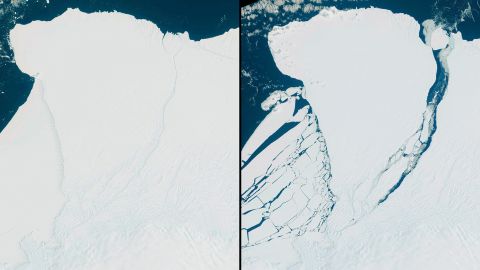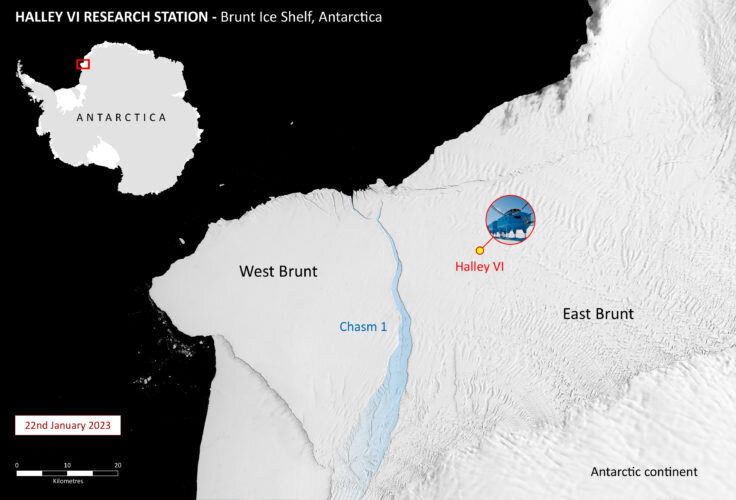Segundo cientistas britânicos, um enorme icebergue destacou-se dia 22 Janeiro 2023 da Antárctida.
O bloco de gelo, que totaliza 1.550 quilómetros quadrados, destacou-se do bloco de gelo no passado domingo, entre as 19:00 e as 20:00 horas (hora de Lisboa), durante uma maré que aumentou uma fissura existente, informou em comunicado a British Antarctic Survey (BAS), um organismo de investigação nas zonas polares.
Há dois anos, um icebergue de dimensão praticamente idêntica tinha-se formado na mesma zona, baptizada Barreira de Brunt, sobre a qual está instalada a estação de investigação britânica Halley VI.
Os glaciólogos, que estão no terreno de Novembro a Março, constatam, desde há uma década, o aumento de vastas fissuras no gelo.
Em 2016, o BAS tinha decidido deslocar a sua estação em 20 quilómetros, com receio de acabar por ficar em um icebergue à deriva, devido à fusão dos gelos.
“O destaque era esperado e constitui um comportamento natural da Barreira de Brunt. Não está ligado às alterações climáticas”.
Dominic Hodgson, glaciólogo
Porém, o continente sofre o impacto do aquecimento global, com temperaturas inéditas registadas em 2022, como de resto no conjunto do Planeta.
A extensão do gelo atingiu em Fevereiro de 2022 o mínimo de 44 anos de registos via satélite, indicou recentemente o relatório anual do Programa Europeu sobre as Alterações Climáticas, o Copernicus.
Em 2021, o degelo total de um icebergue, a quatro mil quilómetros do local de onde se destacou do bloco de gelo, em 2017, tinha libertado mais de 150 mil milhões de toneladas de água doce misturada com nutrientes o que reforçou a inquietação dos cientistas quanto ao impacto do fenómeno em um ecossistema frágil.
The British Antarctic Survey (BAS) said the formation of the new iceberg – in a natural process called "calving" – was not due to climate change, which is accelerating the loss of sea ice in the Arctic and parts of Antarctica.
The iceberg, measuring 1,550 square kilometers (598 square miles), detached from the 150-metre-thick Brunt Ice Shelf a decade after scientists first spotted massive cracks in the shelf.
A similar spectacular separation, involving a 1,270-square-kilometer iceberg, occurred around a year ago.
"This calving event has been expected and is part of the natural behavior of the Brunt Ice Shelf," said BAS glaciologist Dominic Hodgson.
"It is not linked to climate change."
Britain's Halley VI Research Station monitors the state of the vast floating ice shelf daily but is unaffected by the latest rupture. Read more here
Geração explorer
25-01-2023




